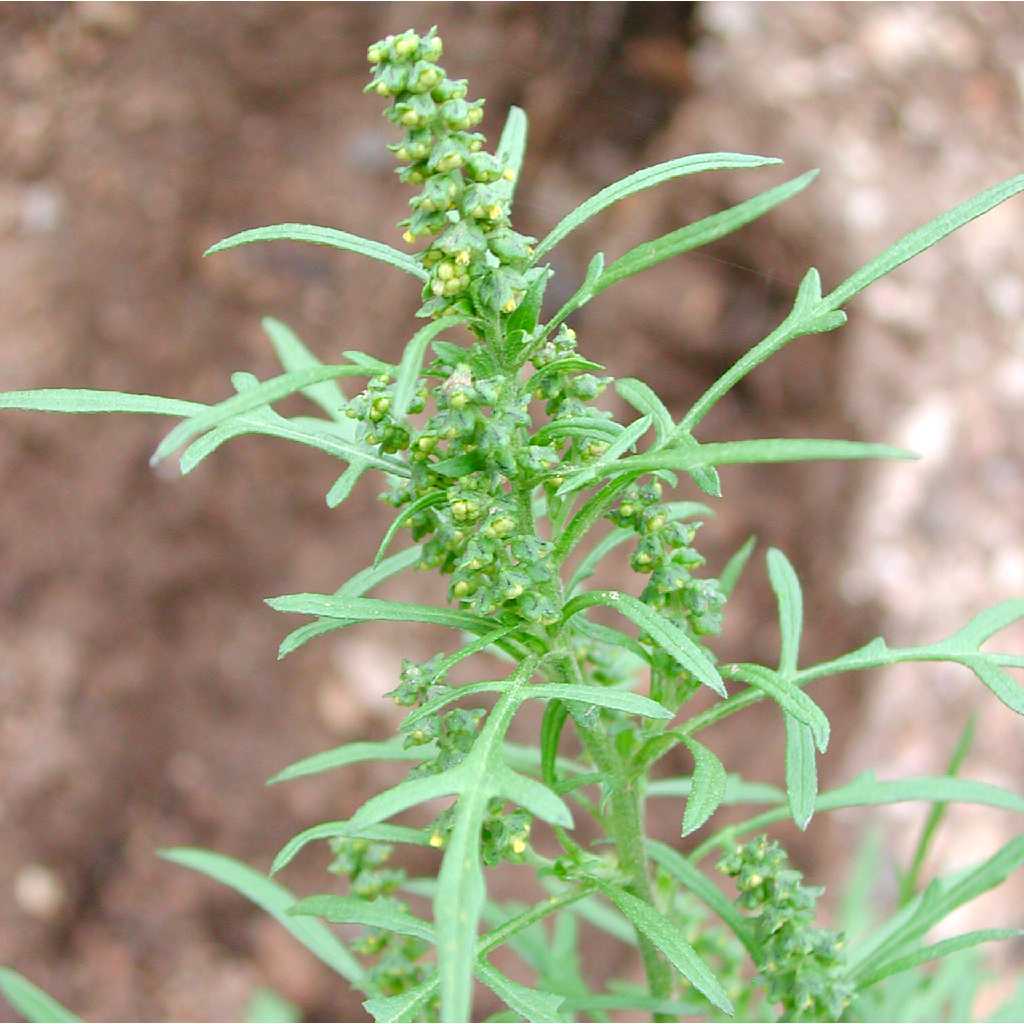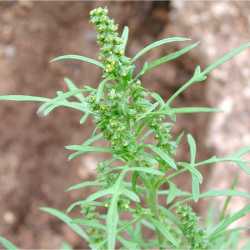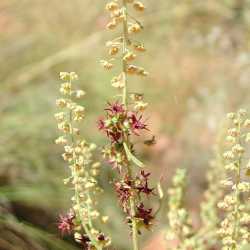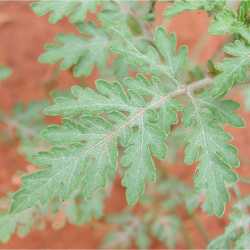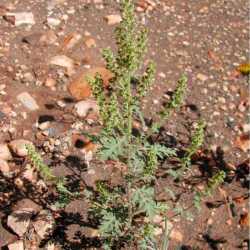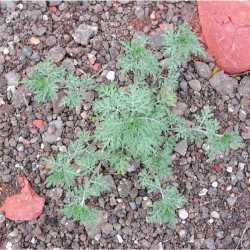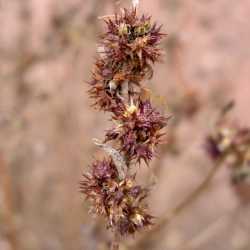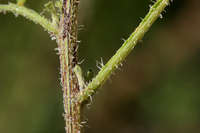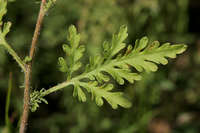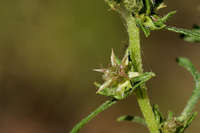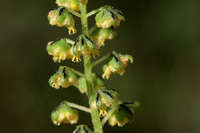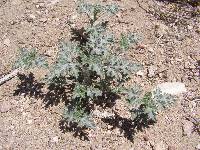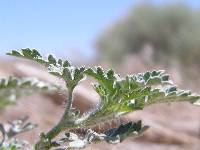Annuals, 10-80+ cm. Stems erect. Leaves opposite (proximal) and alternate; petioles 5-15(-25+) mm; blades ± deltate, 15-40(-85+) × 12-35(-80+) mm, 1-2-pinnately lobed, bases cuneate, ultimate margins entire or toothed, abaxial faces hispid and strigillose to sericeous, adaxial faces strigillose and gland-dotted. Pistillate heads clustered, proximal to staminates; florets 1. Staminate heads: peduncles 0.5-2 mm; involucres shallowly cup-shaped (usually each with 1-5+ black nerves), 3-5(-7) mm diam., sparsely hirsute or glabrous; florets 6-12(-20+). Burs: bodies fusiform to obpyramidal, 3-5 mm, ± hirsutulous or glabrate, spines 8-18+, scattered, stoutly subulate (sometimes basally flattened or navicular), 2-4(-5) mm, tips straight or uncinate. 2n = 36.
Flowering (Apr-)Jul-Nov. Canyons, sandy flats, dunes; 10-3000 m; Alta., Man., Sask.; Ariz., Calif., Colo., Idaho, Kans., Minn., Mo., Mont., Nebr., Nev., N.Mex., N.Dak., Okla., Oreg., S.Dak., Tex., Utah, Wash., Wyo.
Duration: Annual
Nativity: Native
Lifeform: Forb/Herb
General: Annual herbs, 10-80 cm or more tall; stems erect; herbage bluish-gray or green, appearing dusty with the farinose or glandular pubescence that covers the plant.
Leaves: Lower leaves opposite and upper leaves alternate, on petioles 5-15 mm long; blades ovate or deltoid in outline, pinnatifid 1-3 times, ultimate margins entire or toothed; entire leaf to 4 cm long or more, leathery and thick, with stiff hairs all over and stipitate-glands on the upper surface; sometimes lighter in color beneath.
Flowers: Pistillate and staminate flowers in separate heads; all heads discoid; staminate heads pendant in terminal racemes, with a few pistillate heads at the base of each raceme. Pistillate heads with 1-5 florets, these lacking corollas; the entire head develops into a single spiny bur at maturity. Staminate heads with cup-shaped involucres, 2-6 mm in diameter, the phyllaries (bracts) connate in 1 series; containing 5-60 disc flowers, the corollas 5-lobed, whitish or purplish.
Fruits: Burs 4-8 mm long, with 1 beak, armed with 6-30 strongly flattened, straight, spreading spines 2-5 mm long.
Ecology: Found on dry to moist sandy soils, often in disturbed habitats, from 1,000-7,000 ft (305-2134 m); flowering June-December.
Distribution: Western N. Amer., from MN to Alberta, south to w TX, NM, AZ, CA, and n MEX.
Notes: This is a weedy annual Ambrosia. Look for the dissected leaves which are more or less hairy and sometimes tinged with blue or purple; the racemes of pendant male flowering heads which can look yellowish inside due to the color of the stamens, and late in the season, a few small spiny burs, 4-8 mm long, near the bottom of the racemes. Ambrosia confertiflora is similar, but that species is perennial, and has smaller burs (2-4 mm) with hooked spines (A. acanthicarpa has straight spines). Ambrosia psilostachya also appears similar, but that species is a perennial with running rootstock, and the fruits usually do not have spines on them.
Ethnobotany: An infusion of the plant was taken for menstrual obstructions, and the ground root was placed in the tooth for toothache. The ash of the leaves was used in ceremonies.
Etymology: Ambrosia is Greek for food of the gods, while acanthicarpa means having thorny fruits.
Synonyms: Franseria acanthicarpa
Editor: LCrumbacher 2011, AHazelton 2015
Branching annual 1-8 dm, coarsely strigose to scabrous-hispid or both; lvs petioled, opposite below, alternate above, bipinnatifid (or the upper sessile and once pinnatifid), the blade 2-8 cm; heads numerous in terminal-racemiform clusters, sometimes chiefly staminate or chiefly pistillate; fruiting invols solitary or clustered in the upper axils, 5-10 mm, 1- fld and 1-beaked, with several series of flattened, divergent spines, these sometimes reduced in the chiefly staminate plants; 2n=36. Open places, especially in sandy soil; Wash. to Calif., e. to Sask. and Tex., and occasionally intr. eastward, as in Minn. and Mo. July-Oct. (Franseria a.; Gaertneria a.)
Gleason, Henry A. & Cronquist, Arthur J. 1991. Manual of vascular plants of northeastern United States and adjacent Canada. lxxv + 910 pp.
©The New York Botanical Garden. All rights reserved. Used by permission.


